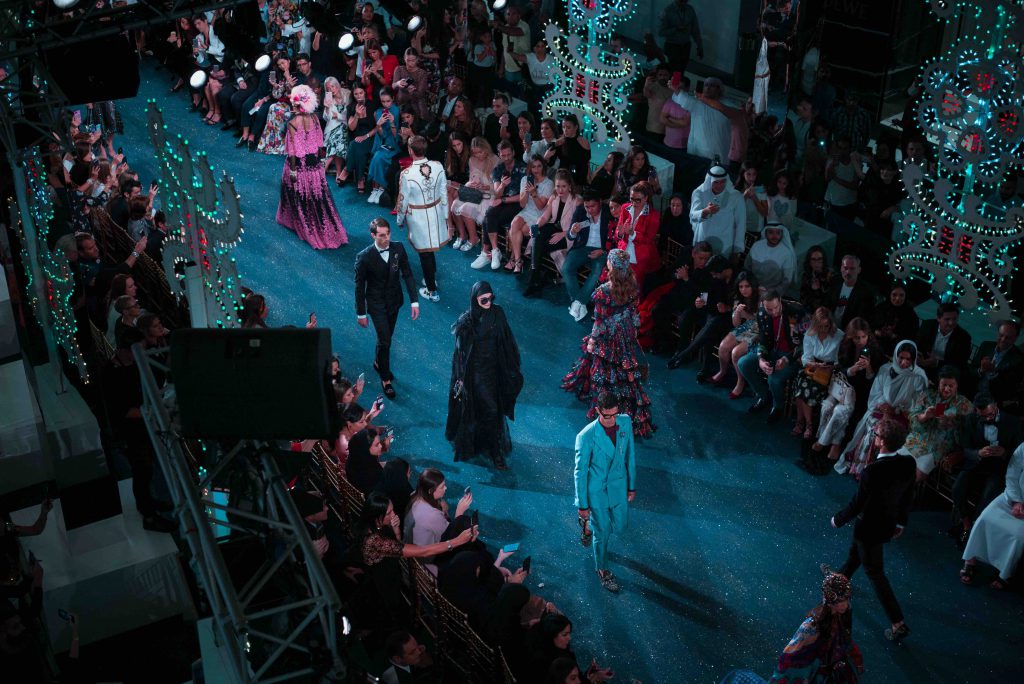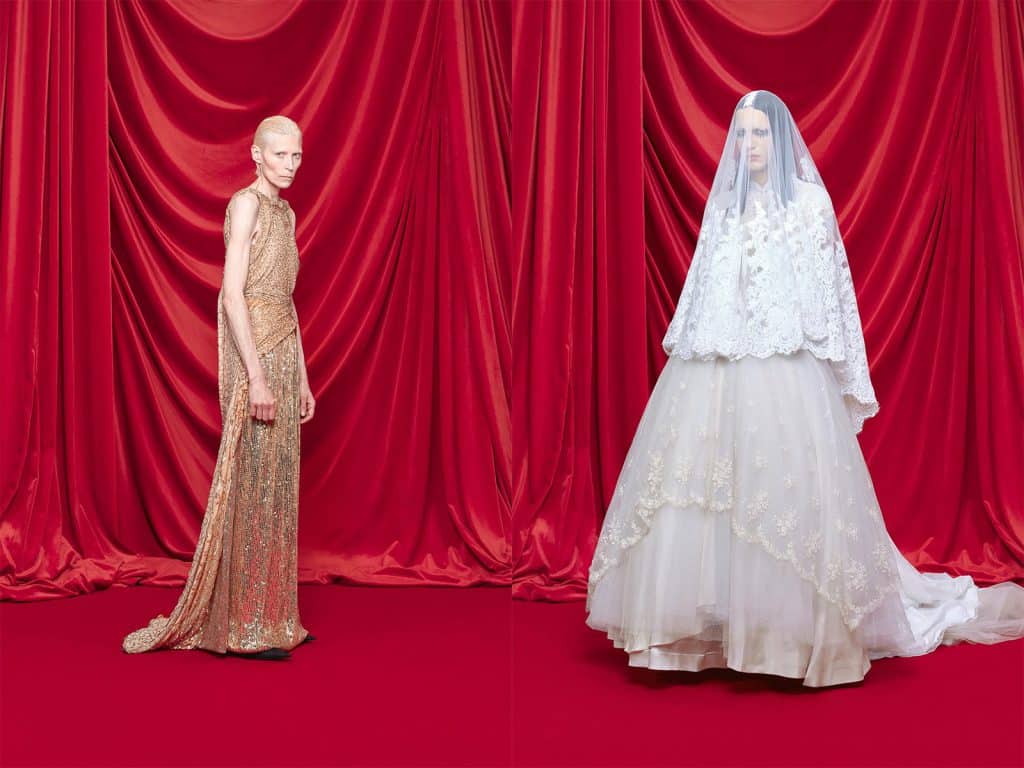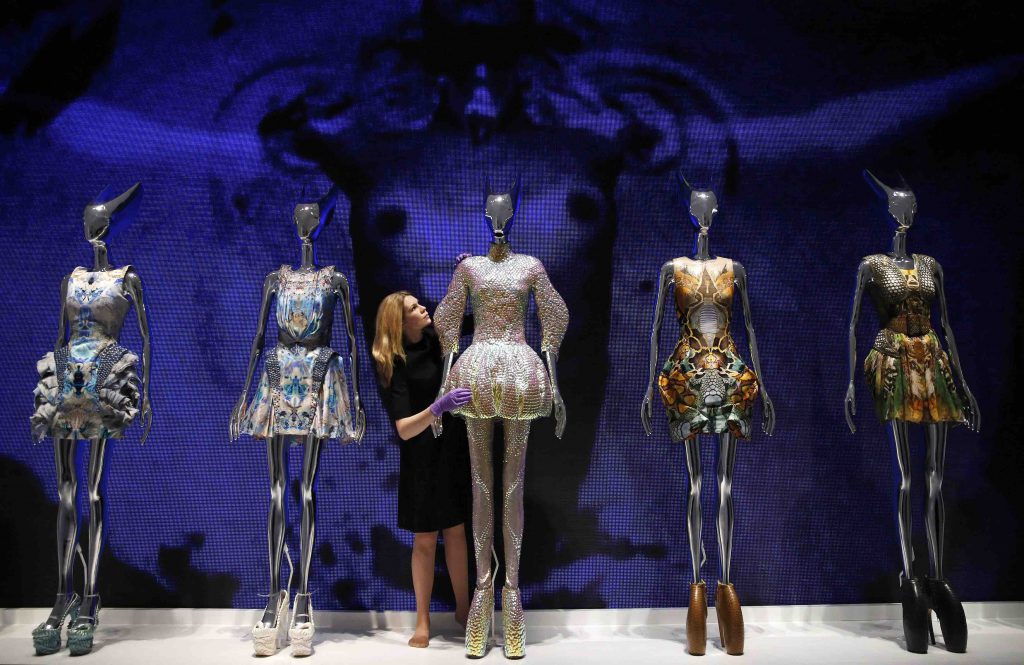Story VAN ANH
Photos INTERNET
In the hands of talented designers, music can transform the catwalk into a multidimensional stage of dreams and breathe life into fabric.

The secret language of the catwalk
From the 19th century salons of Paris, where Strauss’s waltzes intertwined the flowing movement of silk, to Dior’s Spring/Summer 2025 show featuring the electronic bass of Charli XCX, music has always been an essential partner of fashion. More than just background noise, it serves as a secret language between the designer and the audience.
In the 1960s, Velvet Underground’s Venus in Furs turned Yves Saint Laurent’s runway into a revolution. The haunting guitar and vocals of Lou Reed reflected the boldness of the designer’s androgynous suits and expressed a manifesto of freedom. By the 1990s, the emergence of hip- hop in Karl Lagerfeld’s CHANEL show was not just a daring choice but a declaration: Fashion must move with the rhythm of the streets.
This harmony is no coincidence. In 2023, at the Giza Pyramid, Dior transformed its show into a mystical ritual with a set by techno legend Jeff Mills. The cold electronic sounds, infused with echoes from the past, elevated the astrology-inspired collection to a cosmic level. As creative director Kim Jones explained: “Jeff’s music is a portal to a parallel world – where time is no longer linear, and clothing becomes the embodiment of the stars.”

In Vietnam, designers are also paying close attention to their runway soundtracks. DJ Levioi, who handles the music for Duc Studio and Ly Qui Khanh’s shows, shared: “Every note must be a cut on the fabric. When Duc Studio’s collection carries a rebellious spirit, I choose techno with a gritty rhythm – it’s like a scream breaking the mold. For Ly Qui Khanh, smooth house music whispers of eternal elegance”.
“Fashion can be heard”
In the contemporary context, designers such as Virgil Abloh (Off-White) and Demna Gvasalia (Balenciaga) push the boundaries further. For Balenciaga’s Fall/Winter 2024 show, Demna chose Beethoven’s Moonlight Sonata, but arranged it as a drone ambient remix. The classical piece fragmented, transforming into a non-spatial sound and contrasting with high-tech puffer jackets – a metaphor for the collision between tradition and post-modernity.
Alexander McQueen was also a master of artistic metaphor. In his Plato’s Atlantis (2010) show, the crashing waves from The Host of Seraphim (Dead Can Dance) transformed dresses printed with mutated sea creatures into a prophecy of climate change. Here, music was not mere aesthetics but an awakening. Conversely, Phoebe Philo (Céline) found power in silence. In her shows, she let the sound of models’ footsteps echo through the empty space in a statement of quiet power. Music, or its absence, remains a powerful tool for designers to convey their messages.

When Daft Punk remixed Giorgio by Moroder for Saint Laurent’s show, they didn’t just add rhythm – they infused the label’s sparkling blazers with the rebellious spirit of the ‘70s. Music on the catwalk is a dialogue between past and future, between technique and emotion. It turns fabric into poetry and models into characters in a non-linear play.
As critic Susannah Frankel once wrote: “Fashion cannot be worn with the ears, but it can be heard with the eyes.” In a world where everything can become art, music is the invisible thread connecting tangible beauty with intangible vibrations – making every runway not just a showcase of fashion designs but a symphony of creativity.










